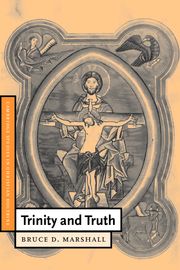Book contents
- Frontmatter
- Contents
- Preface
- A note on translations
- 1 Introduction: theology and truth
- 2 The triune God as the center of Christian belief
- 3 Epistemic justification in modern theology
- 4 Problems about justification
- 5 The epistemic primacy of belief in the Trinity
- 6 Epistemic priorities and alien claims
- 7 The epistemic role of the Spirit
- 8 The concept of truth
- 9 Trinity, truth, and belief
- Index
2 - The triune God as the center of Christian belief
Published online by Cambridge University Press: 23 December 2009
- Frontmatter
- Contents
- Preface
- A note on translations
- 1 Introduction: theology and truth
- 2 The triune God as the center of Christian belief
- 3 Epistemic justification in modern theology
- 4 Problems about justification
- 5 The epistemic primacy of belief in the Trinity
- 6 Epistemic priorities and alien claims
- 7 The epistemic role of the Spirit
- 8 The concept of truth
- 9 Trinity, truth, and belief
- Index
Summary
The concept of Christian belief
We want to develop, in the first place, a theological account of the justification of beliefs. Such an account will seek to explain in a conceptually precise and maximally plausible way how epistemic justification works for those who hold Christian beliefs. It will obviously try to account for the justification of Christian beliefs themselves. But it will have to say something about the justification of beliefs more generally; there will need at least to be an explanation of how to decide which beliefs belong, or could belong, to a view of the world compatible with holding Christian convictions.
In order to develop such an account, we will naturally have to have a concept of “Christian belief,” the sort of concept which will enable us to pick out or identify Christian beliefs. Unless we know how to do this, we obviously will not be able to say how justification works for those who hold such beliefs. What we need, in other words, is the ability to list Christian beliefs; this requires a definition of “Christian belief” which will equip us to form a list in a reliable rather than arbitrary and haphazard way. Once we have the concept of “Christian belief,” we should be able to say what individuates a Christian system of beliefs, and thereby say (in principle, not in complete detail) what beliefs may belong to a Christian view of the world.
Arriving at such a concept, and with it acquiring the capacity to identify Christian beliefs, turns out to be a more complex undertaking than one might initially suppose.
- Type
- Chapter
- Information
- Trinity and Truth , pp. 17 - 49Publisher: Cambridge University PressPrint publication year: 1999



